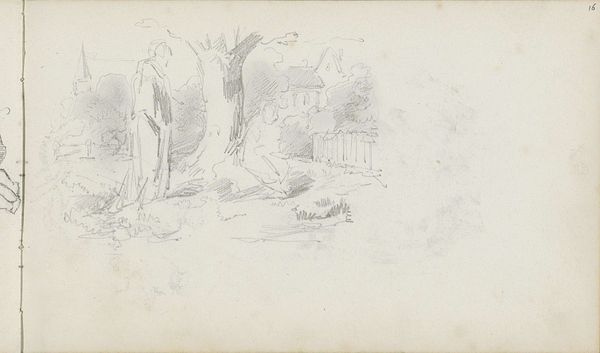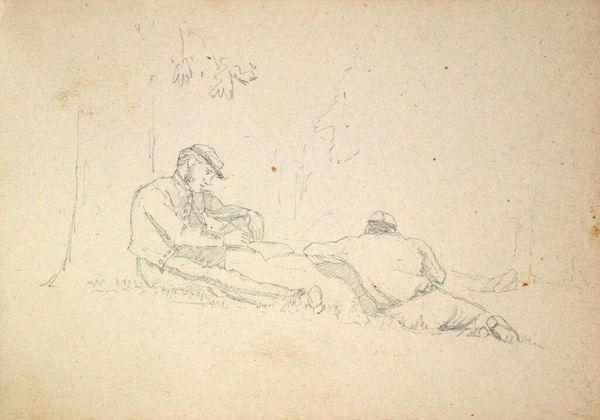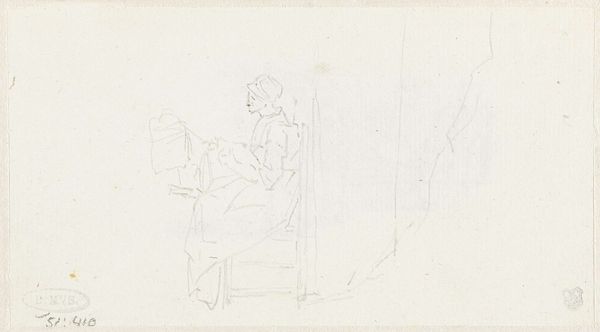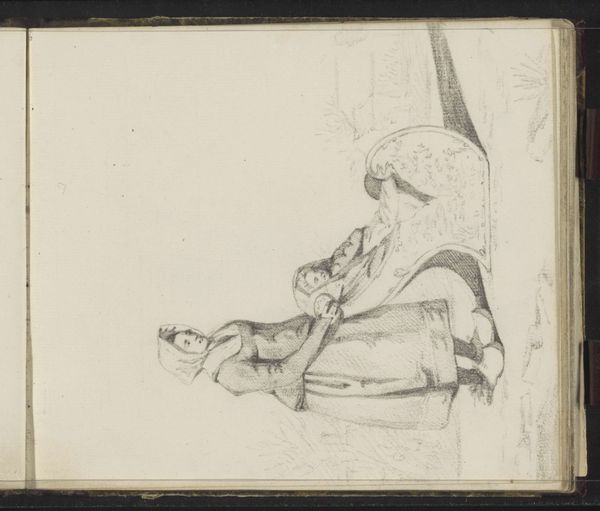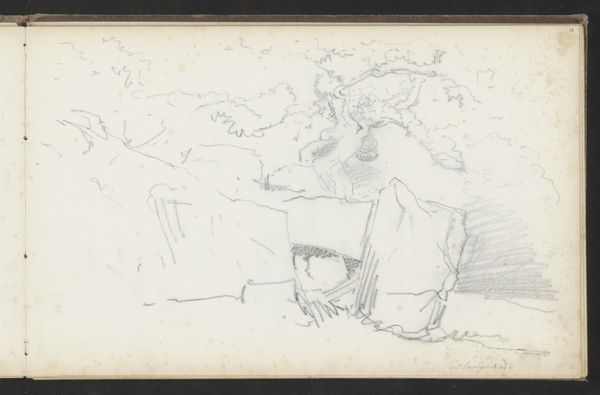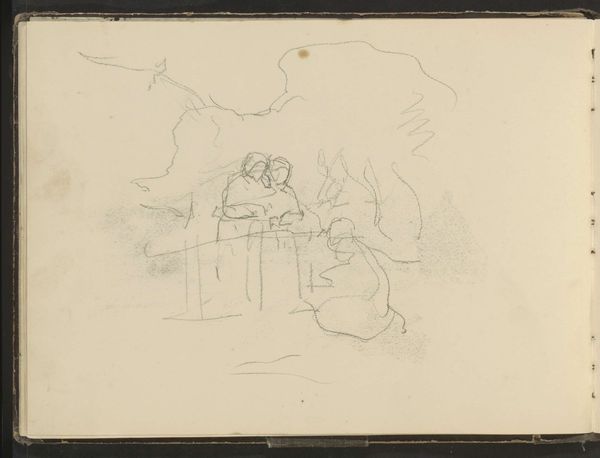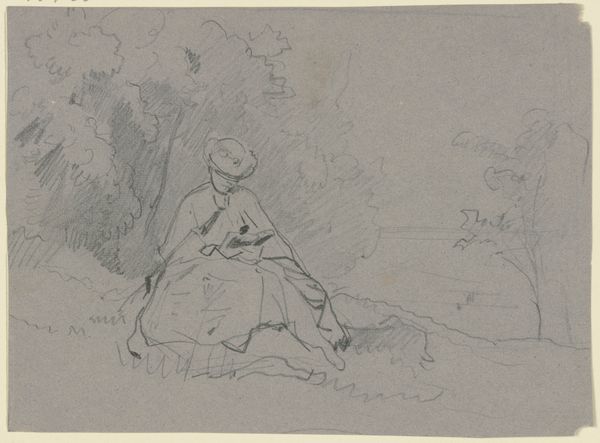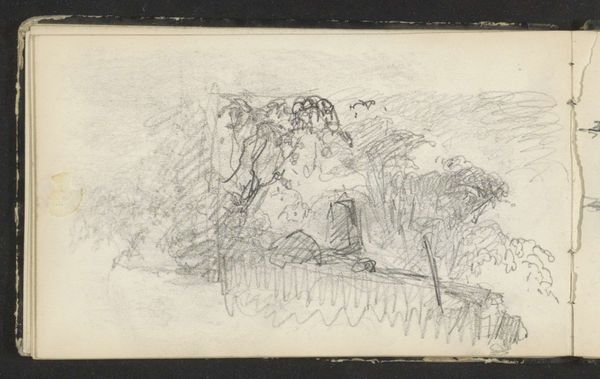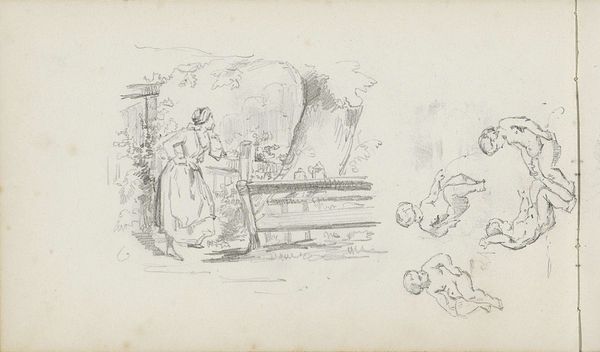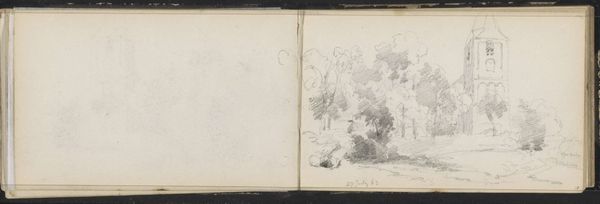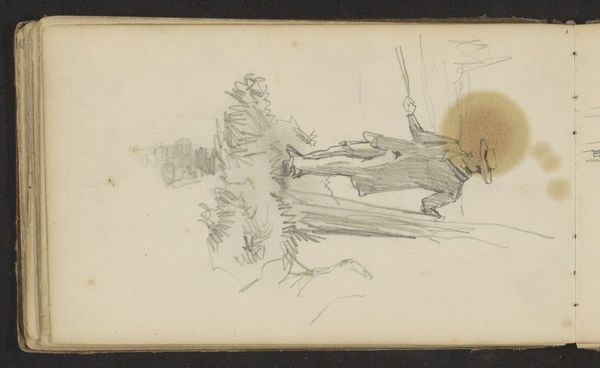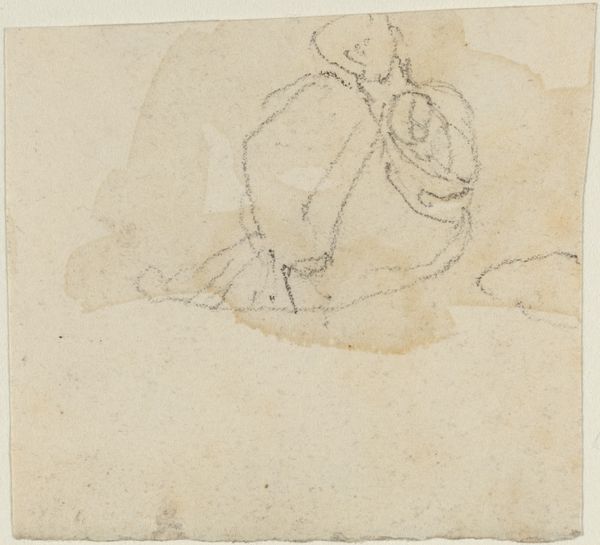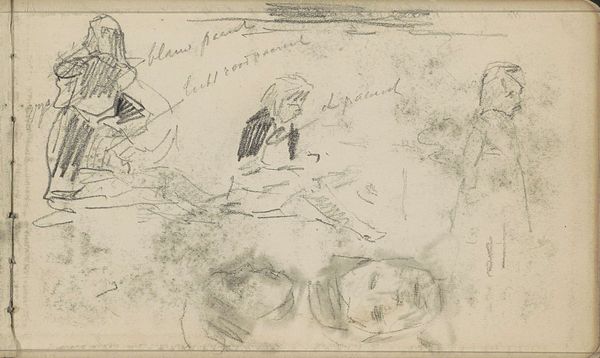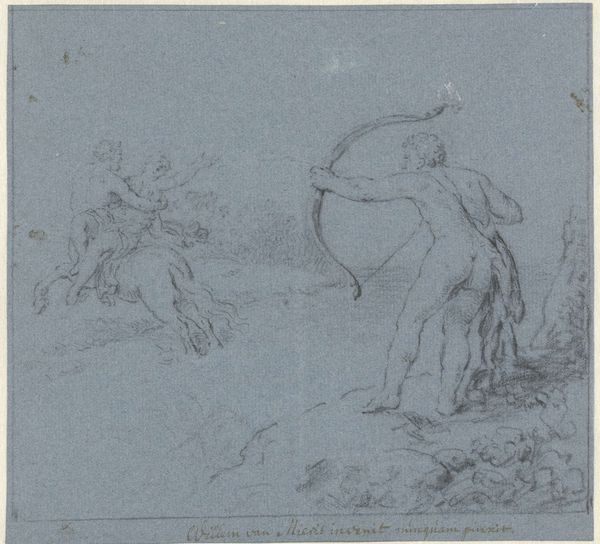
drawing, paper, pencil
#
drawing
#
paper
#
romanticism
#
pencil
#
genre-painting
Copyright: Rijks Museum: Open Domain
Curator: A light pencil drawing from Charles Rochussen, titled "Vrouw bij een open raam" which roughly translates to "Woman at an Open Window." Made sometime between 1840 and 1860. It's on paper and resides here at the Rijksmuseum. It’s wispy. What's your initial read of the work, from a… textural perspective? Editor: Well, given the period and knowing the Romanticism tag, my first reaction is about this interplay of interior and exterior spaces; it feels quite contemplative. The woman is positioned at this liminal space, the window itself, which divides—yet connects—the domestic sphere with the outside world. But seeing it’s a pencil drawing, how does the actual making and material come into play? Curator: Exactly! Look closely. The artist is mediating a cultural perception. This isn't about high art in the academic sense, this is a rapid way of producing an image, a skill, but also access to cheap materials. Paper and pencil democratize image making. Does this piece offer insight to gendered labor, and even class structures during this era? Editor: That's an interesting perspective. I wouldn't necessarily think of gender and labor just from looking at it but you're right about the inexpensive materials of the medium which would expand the accessibility to image making. Does the domestic scene perhaps hint at certain restrictions placed upon women of the time, confining them to the home and how that relates to craft? Curator: Precisely! Pencil wasn't only for sketching 'before' a 'real' painting. How did this method change perceptions about making in the art world? Could we propose this drawing as something 'finished' in itself? How would audiences react to something as "simple" as this? Editor: It certainly makes me consider art’s place within cultural contexts much more deeply, especially concerning labor and consumption that I didn’t initially recognize. It seems like what appears simple can actually reveal complex socioeconomic dynamics that influence artistic production. Curator: Indeed, art always invites multiple entry points when considering method and the society for which and from which it was produced. Editor: Definitely food for thought; I’ll keep that in mind moving forward.
Comments
No comments
Be the first to comment and join the conversation on the ultimate creative platform.
